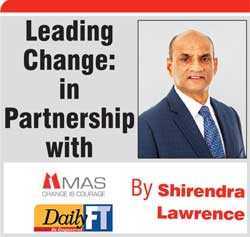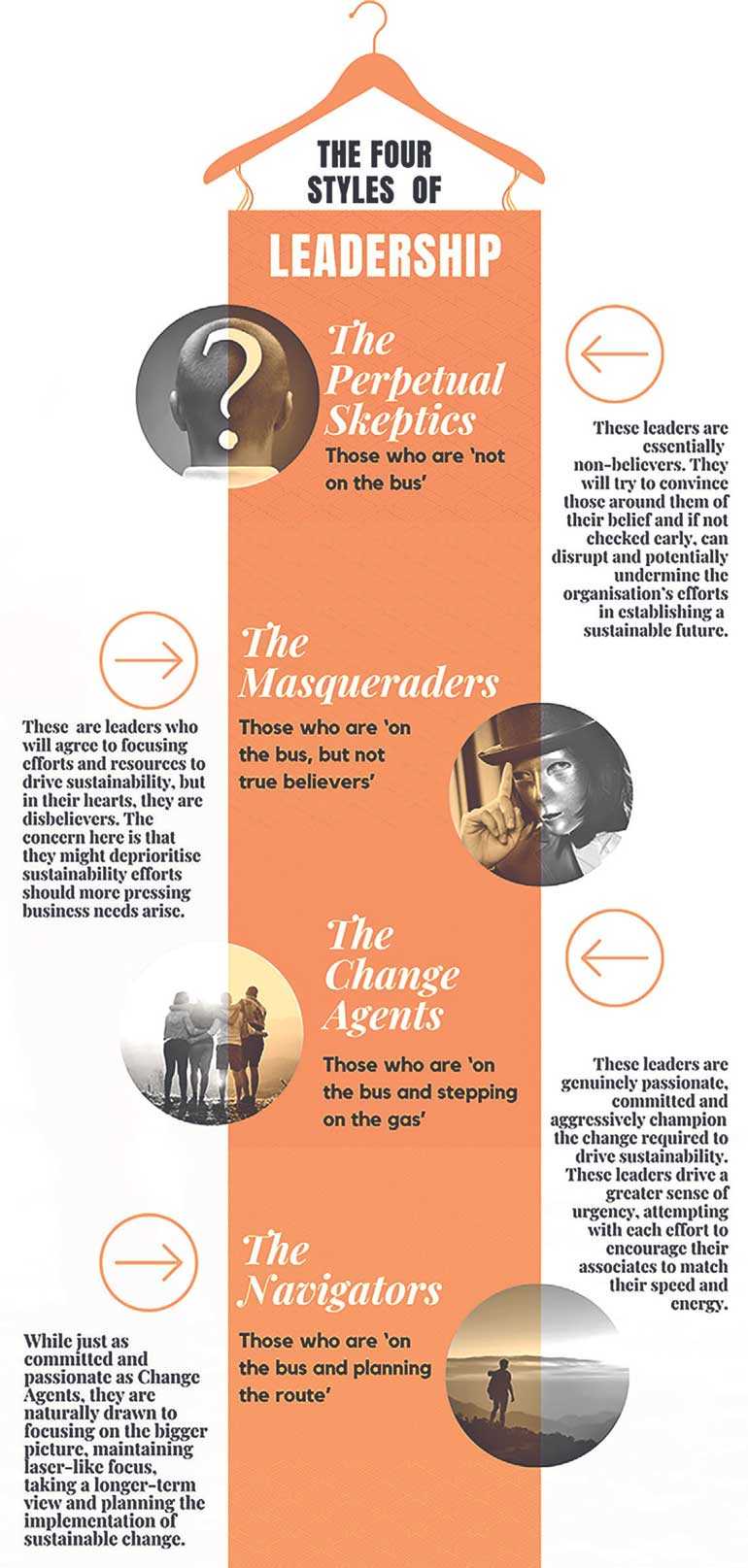Sunday Apr 20, 2025
Sunday Apr 20, 2025
Wednesday, 16 December 2020 00:00 - - {{hitsCtrl.values.hits}}

Leading through partnerships with trusted, likeminded parties has been a key factor in our success. Long-term strategic partnerships allow your partners to embrace their roles as co-contributors to an effort. In our solar energy project, working with multiple partners with distinctive strengths and focuses helped us underwrite the risk of depending only on one supplier and leverage on the understood strengths and capabilities of each
 Winding the clock back a little over 10 years takes us back to the global financial crisis of 2007/8. Those that survived this testing time embarked on the journey of post-recession recovery, with the realisation that life in general, and the predictability of business in particular, would never be the same again.
Winding the clock back a little over 10 years takes us back to the global financial crisis of 2007/8. Those that survived this testing time embarked on the journey of post-recession recovery, with the realisation that life in general, and the predictability of business in particular, would never be the same again.
MAS was no exception, and the senior leadership who had switched the business into ‘survival mode’ 18 months earlier, gathered in early 2009 with the purpose of strategising the way forward. The outcome was the formulation of five key strategic priorities, to catalyse the transition of the business back to its more aggressive and progressive self.
One of the five priorities was to ‘develop sustainability as a key competency and competitive advantage’. When volunteers were requested from the board members to champion each of the priorities, I had no hesitation in raising my hand to focus on this particular one; my anticipation was that this would be an opportunity for me to help make a meaningful difference to the business and its internal and external stakeholders.
We understood our roles and responsibilities in addressing pertinent global issues such as climate change, poverty, inequality, pollution and resource depletion. Sustainable development has become a key influencer in our business decision-making process, and we have committed to reducing any negative impact we would otherwise make on our planet. As business leaders, our responsibilities then extend to leading and inspiring those who work with us to drive holistic change.
Lessons in leadership
As with any strategy requiring a change of culture, leadership is a vital driver in fostering sustainability within the organisation. A lack of clear purpose, vision and direction at the top of the chain, hinders the onboarding of those that matter through the rest of the pyramid, and has an impact on the final result and the speed of change within the organisation.
But expecting all leaders of a large corporation to have an aligned perspective of the importance of sustainability for business growth, sustenance and goodwill is naïve and optimistic. Factors that influence this include the nature and context of the business, recent successes and challenges, resource availability and the wider culture of the organisation. It is expected that leaders would approach sustainability with different levels of passion and diverse perspectives.
My observation over decades in different companies, industries and countries is that styles will vary based on multiple drivers, giving rise to four broad types of leaders. The ability of the individual at the helm to understand and deal with this is critical, if the objectives and goals are to be achieved.
1. The Perpetual Sceptics - Those who are ‘not on the bus’
Such leaders are essentially non-believers. More often than not, they will try to convince those around them of their belief and if not checked early, can disrupt and potentially undermine the organisation’s efforts in establishing a sustainable future. While there is the possibility of influencing and steering them to believe in the cause, addressing this early is a responsibility for senior leadership. If not, a negative vote will surely be cast during crucial decisions, standing in the way of progress towards the identified goals.
efforts in establishing a sustainable future. While there is the possibility of influencing and steering them to believe in the cause, addressing this early is a responsibility for senior leadership. If not, a negative vote will surely be cast during crucial decisions, standing in the way of progress towards the identified goals.
2. The Masqueraders – Those who are ‘on the bus, but not true believers’
These are leaders who will agree to focusing efforts and resources to drive sustainability, but in their hearts, they are disbelievers of the cause. They may understand and even acknowledge, that even though they may not believe in it, focused efforts in sustainability are needed to meet national or international legislation and customer requirements, or may fear negative reputational impact on the organisation or even on themselves. Such individuals may deprioritise sustainability efforts should more pressing business needs arise and may not prioritise resource and funding allocation. Depending on their position and strength, these leaders may not hold back others, but neither would they support the acceleration of the journey with the urgency, passion or aggression needed.
3. The Change Agents – Those who are ‘on the bus and stepping on the gas’
At the other end of the spectrum are leaders who are genuinely passionate, committed and aggressively champion the change required to drive sustainability. These leaders drive a greater sense of urgency, attempting with each effort to encourage their associates to match their speed and energy. They are inspired to awaken and encourage employee buy-in, and will stand at the forefront, challenge the status quo and encourage those less convinced, to join their journey. Having a large proportion of the leaders of the organisation in this bucket is crucial to the success of the overall effort.
4. The Navigators – Those who are ‘on the bus and planning the route’
Equally strong believers, these leaders differ from the ‘Change Agents’ in their approach to driving sustainability within the organisation. While they are just as committed and passionate, they are naturally drawn to focusing on the bigger picture, maintaining laser-like focus, taking a longer-term view and planning the implementation of sustainable change, enabling others, and making calculated decisions based on risk assessments and bearing business continuity in mind.
As an organisation that is home to over 95,000 employees across the globe, we have encountered all of these different types of leadership over the years. Our own sustainability journey has shown us that Change Agents and Navigators are essential to fuel the journey, driving sustainability top down; the combination of passion and pragmatism yielding the most sustainable results.
The Masqueraders, provided not in large numbers, have not hindered our efforts, as they generally go with the flow, coaxed by the enthusiasm and aggression of the rest, and perhaps some peer pressure. Our organisation is no exception and we do from time to time experience Perpetual Sceptics. Over the years we have better understood how to identify them early and ensure that they have not caused delays or cost the overall success of the organisation’s onward journey. Developing tactics to influence and urge their commitment is important, as is making hard calls where necessary.
Enabling leadership at every level
As the custodian of the responsibility for driving change, a key early task is to identify, empower and inspire those who could create that spark in the businesses, that would then ignite passion and commitment. Having volunteered to lead the sustainability effort across the group, I was conscious that I couldn’t fulfil this task without the support of like-minded individuals, each with the right mix of expertise and passion. These individuals could be young executives or senior leaders, warranting leadership duties regardless of their standing in the organisation.
The key to creating energy in a team of change agents lies in identifying the strengths of the individuals, ensuring that they include the right combination of knowledge, capability, and motivation, and most importantly, that they are great team players. I was fortunate to have access to an amazing pool of individuals from across the group, who were equally happy to be brought together with like-minded colleagues. Their understanding and passion for optimising use of water, renewable energy sources, reducing pollution, and recycling waste was quite extraordinary. They were a group of Change Agents and Navigators, and this made the job at hand easier and more gratifying.
By enabling best-in-class learning opportunities through customer and supply chain partnerships, we were able to motivate the team to work collectively to set a long-term goal, vision and direction. My job then was to guide, eliminate obstacles and help steer the team through challenges. As with any newly formed team, there were some sharp edges to be smoothened, but thankfully the focus remained on the bigger purpose. As a strong believer in ‘what gets measured, gets done’, KPIs and milestone targets were set, and small wins were celebrated to maintain motivation for the longer road ahead.
Partnering to lead
With the MAS ethos being rooted in doing the right thing since the inception, associating like-minded partners, be they customers, supply chain or other, have been key ingredients for the organisation’s success and growth over the years. The leaders at the helms of our business units, strategic projects and initiatives are responsible for identifying and cultivating similar strategic relationships with partner organisations, ensuring that their values and philosophies align with ours.
A key competency of our own leaders is to be able to recognise the drivers behind our stakeholders’ values. Most often than not, these are based on the organisation’s core identity and DNA and are ingrained into their systems. There could be occasions where values are driven by individuals and could pivot based on the movement of those people. In such cases the relationships may be time bound. The success and longevity of a strong partnership after all depends on both parties aligning on deep-rooted organisational beliefs and strategies.
Long-term strategic partnerships allow parties to embrace their roles as co-contributors to an effort. As an example, for our solar energy project, we worked with Nikini Automation, ICC and Fentons, whose distinctive strengths and focuses, helped us underwrite the risk of depending only on one supplier, leveraging on the understood strengths and capabilities of each. The result is the country’s largest multi-location roof mounted solar installation, supporting both the ‘Soorya Bala Sangramaya’ (Net Plus) programme as well as our own renewable energy targets.
A unique aspect of partnerships, particularly in the area of sustainability, is that the opportunity for success is so much greater through collaboration; in this unique space, companies committed to doing the right thing can be equally supportive of their competitors knowing that combined efforts will deliver the best results. Such partnerships may extend to regulators, State institutions, NGOs, and other stakeholders, all working together to create mutual benefits and set examples to others on leading the way.
Leading with humanity
While leaders have an important role in influencing change within our organisations, we have an equal, if not greater, responsibility to do so as individuals, within our families, communities, and our country. Our responsibility as human beings is to leave the world in a better condition than we found it, ensuring that our children can benefit from this planet as we did.
Being Sri Lanka’s largest employer with over 70,000 associates in 52 facilities across the nation also gives us a greater opportunity to influence change in our communities and among the general public. We are able to bring the conversation on sustainable development to the masses through our reach across the country, be it through our friends and families, employees, communication channels, or partner networks.
When our team collected plastic waste off our beaches, transforming it into yarn to create the ICC Cricket World Cup 2019 jersey for the Sri Lanka National Cricket Team, our aim was not only to produce a sustainable, high performance product, but also to raise the issue of marine pollution and plastic waste to the mainstream, and help educate the general public and relevant stakeholders of the challenge, and the opportunity available to create value by upcycling waste. Those in an advantageous position to influence, must use the opportunity to amplify our voices and engage in conversations that ensure important messages are disseminated amongst relevant audiences.
Rewinding the clock back to the strategy session a decade ago, the journey of integrating sustainability into our business in a strategic and long-term manner has been a critical chapter of our growth story; one which continues to evolve. The road has been challenging, but also incredibly rewarding, as our teams have banded together to propel these efforts to heights that we had not imagined. Our roles as leaders may have varied throughout this journey, as we leveraged on different strengths, interests, and leadership styles, but we remain unified through an overarching vision and the acknowledgement of a common truth: the bus has left the station… better be on board, as there is no Plan B.

Observations over decades in different companies, industries and countries show that leadership styles will vary based on multiple drivers, giving rise to four broad types of leaders. The ability of the individual at the helm of the organisation to understand and deal with these different types is critical, if the larger objectives and goals are to be achieved
(The writer is the Chief Operating Officer of MAS Holdings and serves on several boards across the Group. With over 30 years of experience in manufacturing and organisational leadership in the UK and Sri Lanka, he also serves as the Deputy Chairman of the Sri Lanka Apparel Exporters Association, Director of the American Chamber of Commerce and past Chairman/committee member of the Council for Business with Britain. Shirendra joined MAS in 2005 to head the MAS Active division, which under his leadership grew to 19,000 employees across 16 locations. Shirendra is a qualified Chartered Mechanical Engineer, with a Mechanical Engineering Degree from Imperial College, University of London.)